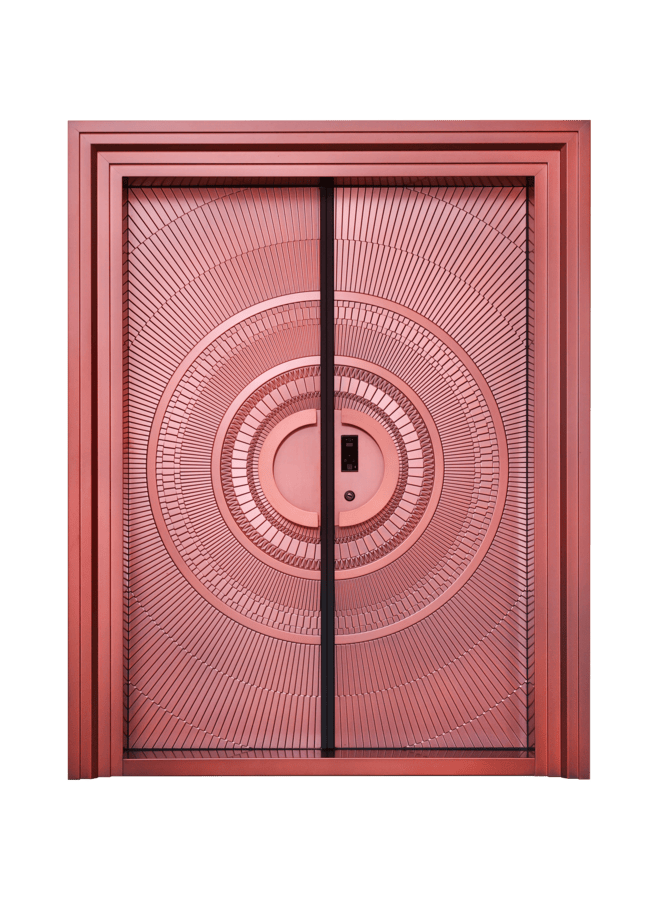
The push for environmentally friendly building materials has made sustainable steel doors an increasingly popular choice for residential and commercial properties alike. Steel doors offer unparalleled durability and resistance to harsh elements, while also delivering benefits for energy efficiency, recyclability, and carbon footprint reduction. Unlike other materials, steel doors blend longevity with eco-conscious manufacturing, making them a top choice for those focused on sustainability. Here, we delve into the many eco-friendly advantages of sustainable steel doors, highlighting why they’re a smart choice for today’s environmentally aware consumer.
Steel doors are manufactured with sustainability in mind. Unlike wood, which requires cutting down trees, steel relies on mining, which—although impactful—produces a material that can be recycled indefinitely. The production of sustainable steel has also evolved with eco-friendly innovations, reducing energy consumption and minimizing pollution during manufacturing. Additionally, the durability of steel means fewer replacements are necessary, which reduces waste over time.
Steel stands out as one of the most recyclable materials available. Each steel door can be melted down and reformed multiple times without losing strength or quality. This recycling process has been a game changer for the steel industry, as about 90% of steel used in construction now comes from recycled materials. The recyclability of steel plays a key role in reducing waste and environmental impact. Additionally, this recycling capability supports the circular economy, where materials are reused rather than discarded.
Compared to other metals, steel retains its properties no matter how often it’s recycled, making it ideal for sustainable building solutions. Unlike materials like plastic or wood, which degrade over time, recycled steel maintains its strength and structural integrity. This unique trait allows steel doors to serve their function without requiring fresh raw materials, ultimately lessening the demand for new resources.
Steel doors offer impressive energy efficiency, especially when designed with insulating cores or thermal breaks. An energy-efficient steel door reduces heat transfer between the interior and exterior of a building, leading to lower energy usage for heating and cooling. By maintaining indoor temperatures, steel doors can help decrease household or business energy bills, contributing to a building’s overall energy efficiency and sustainability.
The Role of Insulation in Steel Doors
Most sustainable steel doors incorporate insulation within their core, often made from eco-friendly materials. This insulation is critical for keeping energy usage low, as it prevents heat from escaping in colder months and blocks excess heat during warmer seasons. Steel doors designed for sustainability often meet or exceed current energy-saving regulations, making them an ideal choice for eco-conscious buyers.
The environmental footprint of steel doors extends beyond just energy efficiency. The steel industry has made strides in reducing pollution associated with production through energy-efficient technologies and waste-reduction practices. Sustainable steel manufacturing processes now rely on electric arc furnaces (EAFs) which use electricity rather than coal, cutting emissions significantly.
Switching to steel doors can contribute to a property’s overall carbon footprint reduction. Because steel doors are long-lasting, the need for replacements over time is minimized. This durability reduces the associated emissions of frequent replacements and transportation, making steel a favorable choice for the environmentally conscious. Additionally, the use of recycled steel further supports carbon reduction efforts by limiting the need for energy-intensive new steel production.
Steel doors play an essential role in green building certifications such as LEED (Leadership in Energy and Environmental Design). Their recyclability, energy efficiency, and durability align with the goals of green building standards, which prioritize sustainable materials, low emissions, and resource conservation. For properties aiming for LEED certification, incorporating sustainable steel doors can add valuable points toward certification requirements.
Compared to wood, aluminum, or PVC, steel offers distinct sustainability advantages. While wood is renewable, it’s also susceptible to weathering and requires treatments that can introduce toxins. Aluminum, although recyclable, is energy-intensive to produce. Steel, by contrast, is durable, recyclable, and adaptable, offering both environmental and functional benefits.
Steel doors are designed to last decades, making them ideal for reducing material waste. Whereas wood doors may need replacing after 15-20 years, steel doors can endure extreme weather and high traffic without compromising their structure or appearance. The longevity of steel minimizes the demand for new doors and lowers the overall environmental impact associated with frequent replacements.
Sustainable maintenance is another benefit of steel doors. Cleaning with environmentally friendly products and avoiding corrosive chemicals can keep steel doors in pristine condition without environmental harm. Furthermore, steel’s resistance to moisture and pests reduces the need for regular upkeep, which is both eco-friendly and cost-effective.
By choosing steel over wood, consumers help combat deforestation. Wooden doors require logging, which depletes forests and reduces biodiversity. In contrast, steel is not sourced from nature in a way that disrupts ecosystems. As such, opting for steel doors over wooden alternatives can support forest preservation and biodiversity conservation efforts.
Another eco-friendly advantage of steel doors is their inherent fire resistance. Unlike wooden doors, which can fuel a fire, steel doors help contain flames, offering safety while also reducing the need for chemical fire retardants. This feature makes steel doors a sustainable and safe choice for buildings aiming to meet fire safety standards.
Steel doors aren’t just practical—they’re also versatile. Modern steel doors can be designed to mimic wood, incorporate various finishes, and fit diverse architectural styles, giving homeowners and businesses eco-friendly options that don’t sacrifice visual appeal. Sustainable steel doors cater to both aesthetics and functionality, meeting the demands of contemporary design.
Sustainable steel doors represent a step toward eco-friendly living, offering benefits like recyclability, energy efficiency, and durability. From the reduction of carbon footprint to energy savings and minimal maintenance, steel doors make a powerful case for those looking to build sustainably. As more consumers and builders embrace eco-friendly practices, sustainable steel doors will likely remain a top choice in responsible construction.